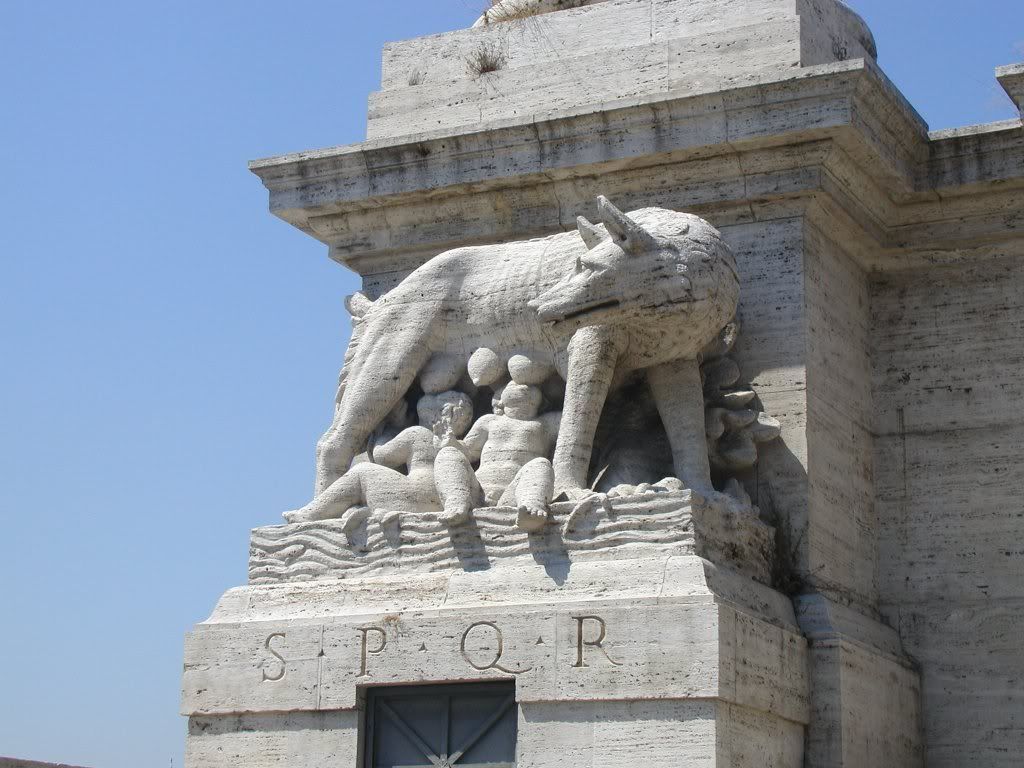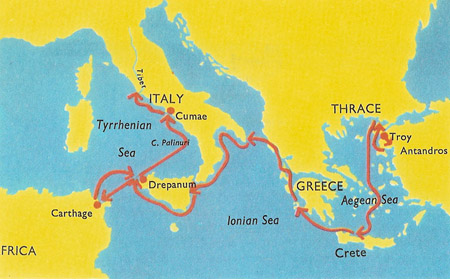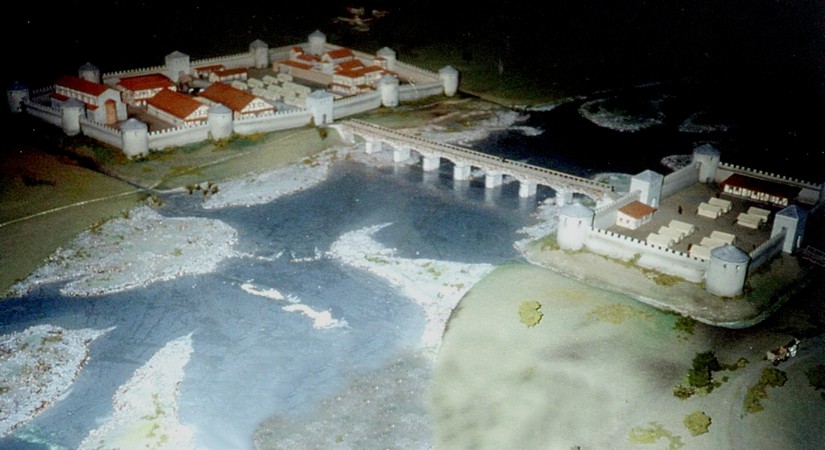RHAS
Elite member
- Messages
- 268
- Reaction score
- 22
- Points
- 0
Haplogroup J2, Romans, Christianity and Viticulture. (Italic Tribes)

Haplogroup J2 - Roman Republic.
"Romans surely helped spread haplogroup J2 across its borders, judging from the distribution of J2 within Europe (frequency over 5%) wich bears an uncanny resemblance to the borders of the Roman Empire."
Eupedia.com, 2013.
http://www.eupedia.com/europe/Haplogroup_J2_Y-DNA.shtml

"Wine making spread to Crete during the Minoan period and then later to Italy with the Etruscans and to Iberia with the Phoenicians. It was an integral component of the economy and social culture of the proto-greek civilizations and the phoenicians who both went on to settle other mediterranean coastal regions. And tracing the spread of Viticulture from its origins to its spread before the Roman period, we can see te highest levels of Haplogroup J2 today correlate with the geographical centres of all these civilizations. While viticulture may not represent the first wave of M172 migrants to Europe, M172 certainly played a strong role in bringing Viticulture to Europe with such civilizations as the Minoans, Greeks and Phoenicians."
M172 Blog - Correlations in the spread of Viticulture and Haplogroup J2, 2008.
http://m172.blogspot.nl/2008/10/corr...ticulture.html
Latini, Piceni, Grecani.
Latini 22.8%, Piceni 36.9%, Grecani Sal. 25.5% J2.

"The Latins (Latin: Latini) were an Italic tribe which included the early inhabitants of the city of Rome. From about 1000 BC, the Latins inhabited the small region known to the Romans as Old Latium (Latium Vetus), that is, the area between the river Tiber and the promontory of Mount Circeo 100 kilometres (62 mi) SE of Rome. The Latins were an Indo-European people who probably migrated into the Italian peninsula during the late Bronze Age (1200–900 BC). ... The Latins belonged to a group of Indo-European ("IE") tribes, conventionally known as the Italic tribes, that populated central and southern Italy during the Italian Iron Age (which began around 900 BC). The most common hypothesis is that the Italic peoples migrated into the Italian peninsula some time during the Italian Bronze Age (1800–900 BC). The most likely migration route was from the Balkan peninsula along the Adriatic coast"
http://en.wikipedia.org/wiki/Latins_(Italic_tribe)
"The Picentes or Picentini (Ancient Greek: Πίκεντες, Πικεντῖνοι) were an Italic tribe who lived in Picenum in the northern Adriatic coastal plain of ancient Italy. The endonym, if any, and its language are not known for certain."
http://en.wikipedia.org/wiki/Picentes
"Grecani Salentini is a Hellenic-speaking linguistic island of Salento, situated in southern Puglia, and consisting of nine municipalities in which a neo-Greek dialect, also known as Grecanic or Griko, is spoken. The origins of this linguistic island in Salentine Greece are uncertain. The German linguist G. Rohlfs proposed its origin in the Magna Graecia region; while O. Parlangeli suggests a Byzantine derivation of the Griki of Salento. Greek researchers (e.g. A. Karanastasis) claim the input of Byzantine elements in the pre-existing Magna Graecia matrix. The Greek arrival in the Salentine Peninsula occurred both in the Magna Graecia, and posterior Byzantine dominations."
http://journals.plos.org/plosone/article?id=10.1371/journal.pone.0050794

Uniparental Markers of Contemporary Italian Population Reveals Details on Its Pre-Roman Heritage.http://www.plosone.org/article/info:doi/10.1371/journal.pone.0050794
"Gascony, at the opposite end of France, has unsurprisingly the lowest percentage of haplogroups associated with Greco-Danubian Neolithic farmers. Only J2 is present in relatively high number there, and the near absence of E, G and T suggest an early colonization from southern Greece (Crete?), or possibly by Romans from Central Italy."
Eupedia.com - Ancient Ancestry Project: Benelux & France.
http://www.eupedia.com/europe/benelux_france_dna_project.shtml

Source: Tipologie europidi ©
"Under the ever-growing influence of the Italiote Greeks, the Romans acquired their own national origin-legend sometime during the early Republican era (500-300 BC). It was centred around the figure of Aeneas, a supposed Trojan survivor of the destruction of Troy by the Achaean Greeks, as related in the poet Homer's epic the Iliad (composed c. 800 BC)."
http://en.wikipedia.org/wiki/Latins_(Italic_tribe)

Haplogroup J2 - Roman Republic.
"Romans surely helped spread haplogroup J2 across its borders, judging from the distribution of J2 within Europe (frequency over 5%) wich bears an uncanny resemblance to the borders of the Roman Empire."
Eupedia.com, 2013.
http://www.eupedia.com/europe/Haplogroup_J2_Y-DNA.shtml

"Wine making spread to Crete during the Minoan period and then later to Italy with the Etruscans and to Iberia with the Phoenicians. It was an integral component of the economy and social culture of the proto-greek civilizations and the phoenicians who both went on to settle other mediterranean coastal regions. And tracing the spread of Viticulture from its origins to its spread before the Roman period, we can see te highest levels of Haplogroup J2 today correlate with the geographical centres of all these civilizations. While viticulture may not represent the first wave of M172 migrants to Europe, M172 certainly played a strong role in bringing Viticulture to Europe with such civilizations as the Minoans, Greeks and Phoenicians."
M172 Blog - Correlations in the spread of Viticulture and Haplogroup J2, 2008.
http://m172.blogspot.nl/2008/10/corr...ticulture.html
Latini, Piceni, Grecani.
Latini 22.8%, Piceni 36.9%, Grecani Sal. 25.5% J2.

"The Latins (Latin: Latini) were an Italic tribe which included the early inhabitants of the city of Rome. From about 1000 BC, the Latins inhabited the small region known to the Romans as Old Latium (Latium Vetus), that is, the area between the river Tiber and the promontory of Mount Circeo 100 kilometres (62 mi) SE of Rome. The Latins were an Indo-European people who probably migrated into the Italian peninsula during the late Bronze Age (1200–900 BC). ... The Latins belonged to a group of Indo-European ("IE") tribes, conventionally known as the Italic tribes, that populated central and southern Italy during the Italian Iron Age (which began around 900 BC). The most common hypothesis is that the Italic peoples migrated into the Italian peninsula some time during the Italian Bronze Age (1800–900 BC). The most likely migration route was from the Balkan peninsula along the Adriatic coast"
http://en.wikipedia.org/wiki/Latins_(Italic_tribe)
"The Picentes or Picentini (Ancient Greek: Πίκεντες, Πικεντῖνοι) were an Italic tribe who lived in Picenum in the northern Adriatic coastal plain of ancient Italy. The endonym, if any, and its language are not known for certain."
http://en.wikipedia.org/wiki/Picentes
"Grecani Salentini is a Hellenic-speaking linguistic island of Salento, situated in southern Puglia, and consisting of nine municipalities in which a neo-Greek dialect, also known as Grecanic or Griko, is spoken. The origins of this linguistic island in Salentine Greece are uncertain. The German linguist G. Rohlfs proposed its origin in the Magna Graecia region; while O. Parlangeli suggests a Byzantine derivation of the Griki of Salento. Greek researchers (e.g. A. Karanastasis) claim the input of Byzantine elements in the pre-existing Magna Graecia matrix. The Greek arrival in the Salentine Peninsula occurred both in the Magna Graecia, and posterior Byzantine dominations."
http://journals.plos.org/plosone/article?id=10.1371/journal.pone.0050794

Uniparental Markers of Contemporary Italian Population Reveals Details on Its Pre-Roman Heritage.http://www.plosone.org/article/info:doi/10.1371/journal.pone.0050794
"Gascony, at the opposite end of France, has unsurprisingly the lowest percentage of haplogroups associated with Greco-Danubian Neolithic farmers. Only J2 is present in relatively high number there, and the near absence of E, G and T suggest an early colonization from southern Greece (Crete?), or possibly by Romans from Central Italy."
Eupedia.com - Ancient Ancestry Project: Benelux & France.
http://www.eupedia.com/europe/benelux_france_dna_project.shtml

Source: Tipologie europidi ©
"Under the ever-growing influence of the Italiote Greeks, the Romans acquired their own national origin-legend sometime during the early Republican era (500-300 BC). It was centred around the figure of Aeneas, a supposed Trojan survivor of the destruction of Troy by the Achaean Greeks, as related in the poet Homer's epic the Iliad (composed c. 800 BC)."
http://en.wikipedia.org/wiki/Latins_(Italic_tribe)

"An earlier tradition that gave Romulus a distant ancestor in the semi-divine Trojan prince Aeneas was further embellished, and Romulus was made the direct ancestor of Rome's first Imperial dynasty. Possible historical bases for the broad mythological narrative remain unclear and disputed. The image of the she-wolf suckling the divinely fathered twins became an iconic representation of the city and its founding legend, making Romulus and Remus preeminent among the feral children of ancient mythography."
Romulus and Remus.
http://en.wikipedia.org/wiki/Romulus_and_Remus

Aeneas Flight from Troy by Federico Barocci.
"In Greco-Roman mythology, Aeneas (/ɪˈniːəs/; Greek: Αἰνείας, Aineías, possibly derived from Greek αἰνή meaning "praise") was a Trojan hero, the son of the prince Anchises and the goddess Aphrodite. His father was the second cousin of King Priam of Troy, making Aeneas Priam's second cousin, once removed. He is a character in Greek mythology and is mentioned in Homer's Iliad, and receives full treatment in Roman mythology as the legendary founder of what would become Ancient Rome, most extensively in Virgil's Aeneid."
Aeneas.
http://en.wikipedia.org/wiki/Aeneas

Map Aeneae Troiani Navigatio

Travels of Aeneas.
"J2a-M92 is a well-defined J2a-M67 sub-lineage, with a distribution restricted to Asia Minor, the Balkans and the north-eastern Mediterranean coasts. Frequency and variance maps make plausible an origin in north-western Turkey, where the highest variance is registered, and a subsequent migration to the Balkans and then to the Italian Peninsula."
Ancient Migratory Events in the Middle East: New Clues from the Y-Chromosome Variation of Modern Iranians.
http://www.plosone.org/article/info%...e-0041252-g002

Last edited:





















